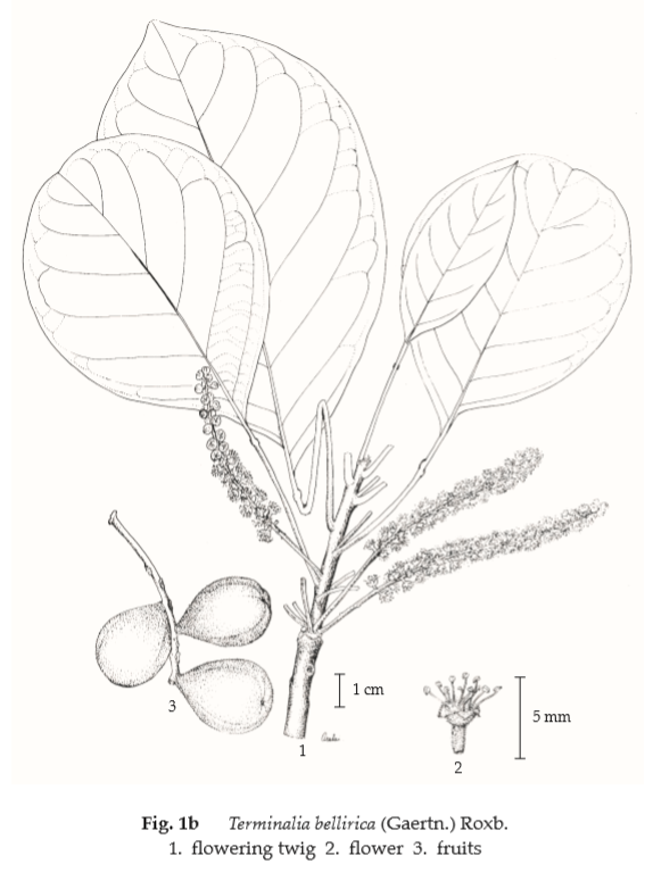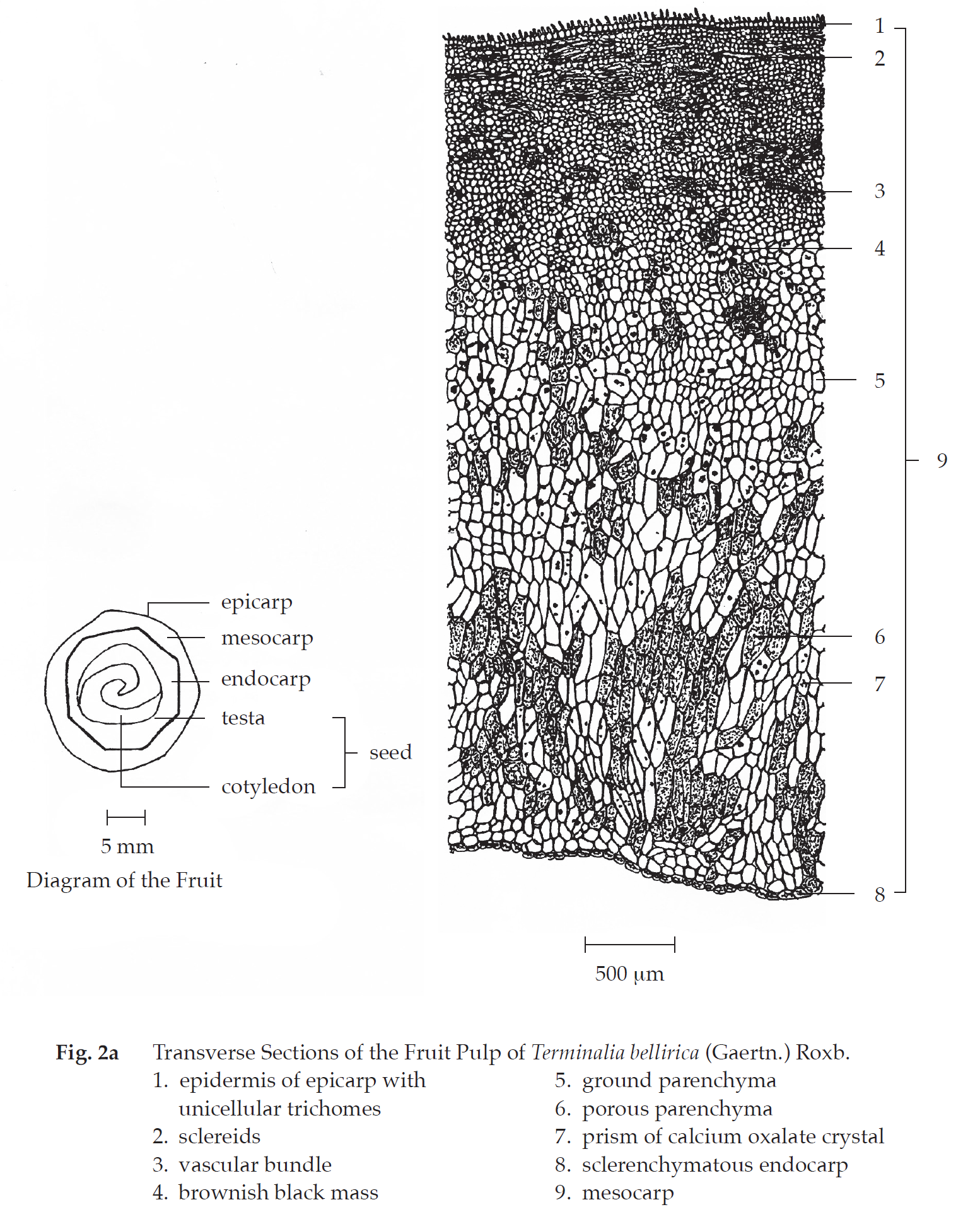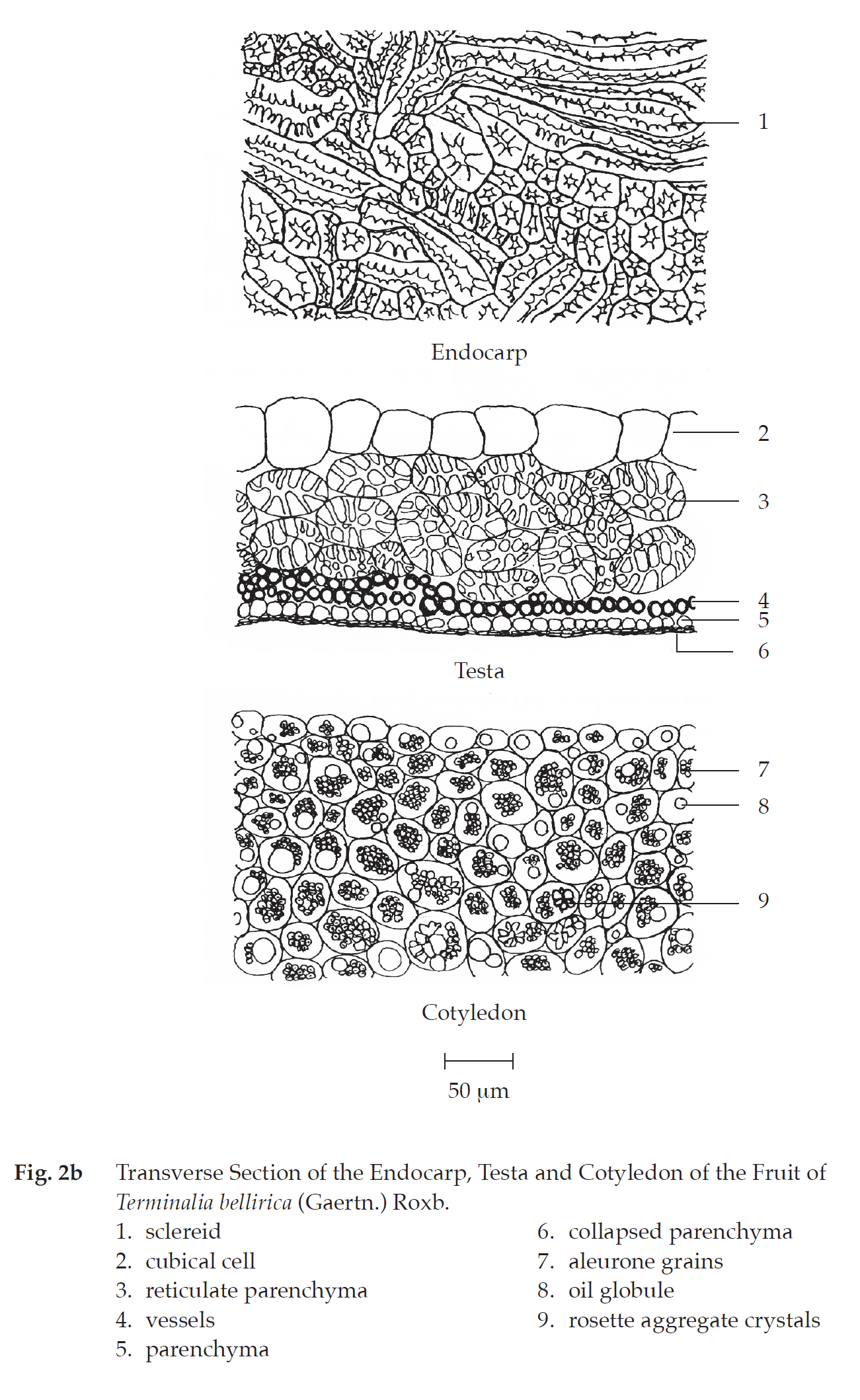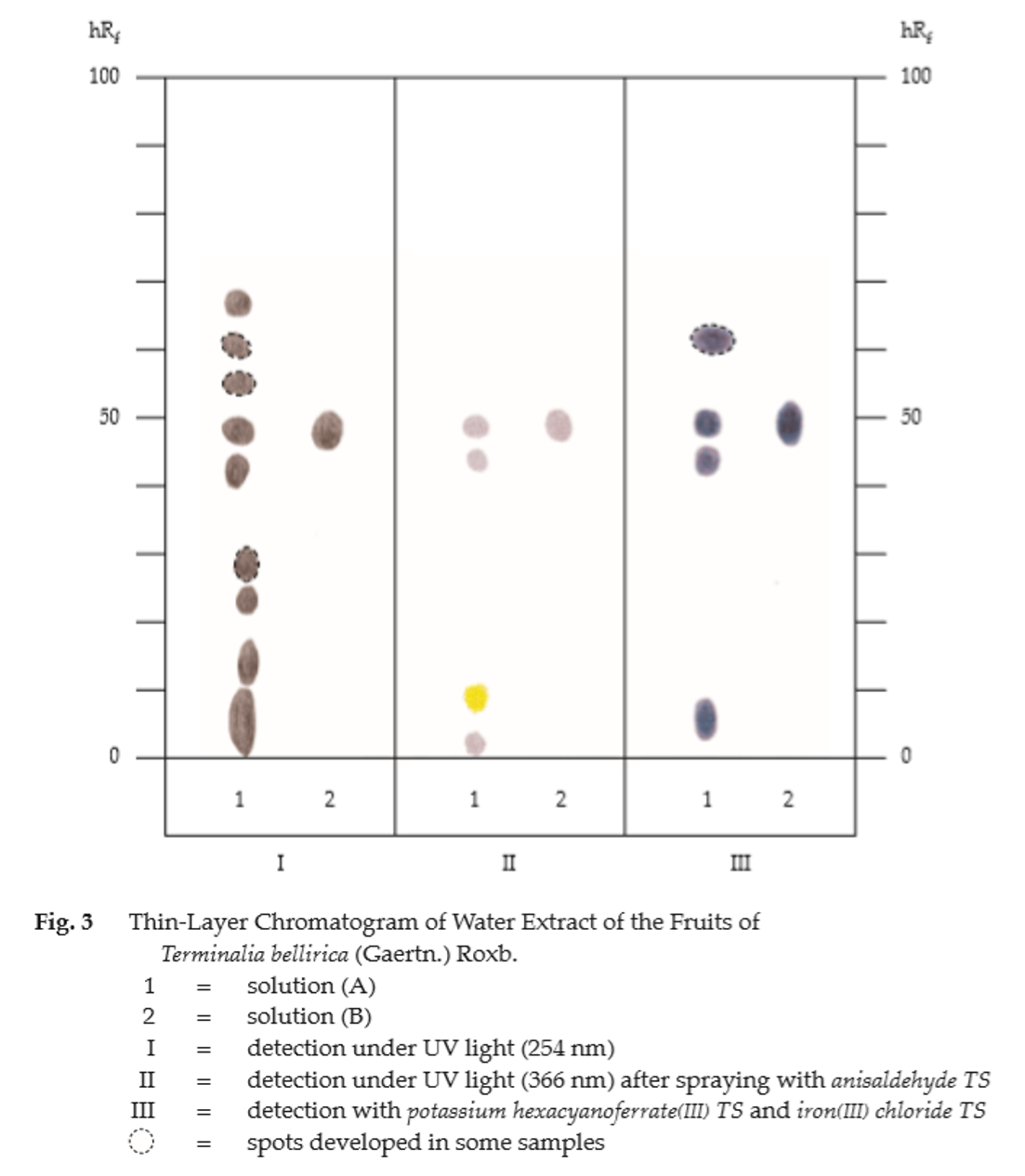ตำรามาตรฐานยาสมุนไพรไทย
Thai Herbal Pharmacopoeia
สำนักยาและวัตถุเสพติด กรมวิทยาศาสตร์การแพทย์ กระทรวงสาธารณสุข
Bureau of Drug and Narcotic, Department of Medical Sciences, Ministry of Public Health(Tinospora crispa (L.) Hook.f. & Thomson)
(Nelumbo nucifera Gaertn.)
(Centella asiatica (L.) Urb.)
(Centella Dry Extract)
(Centella Cream)
(Mesua ferrea L.)
(Piper sarmentosum Roxb.)
(Piper sarmentosum Roxb.)
(Pterocarpus santalinus L. f.)
(Santalum album L.)
(Senna tora (L.) Roxb.)
(Senna alata (L.) Roxb.)
(Senna Alata Tea)
(Piper retrofractum Vahl)
(Myristica fragrans Houtt)
(Andrographis paniculata (Burm. f.) Nees)
(Andrographis Capsules)
(Allium ascalonicum L.)
(Ocimum tenuiflorum L.)
(Curcuma longa L.)
(Turmeric Capsules)
(Turmeric Dry Extract)
(Turmeric Dry Extract Capsules)
(Arcangelisia flava (L.) Merr.)
(Curcuma sp.)
Harrisonia perforata (Blanco) Merr.
(Aristolochia pierrei Lecomte)
(Zingiber officinale Roscoe)
(Ginger Capsules)
(Ginger Tea)
(Cassia fistula L.)
(Nardostachys jatamansi (D. Don) DC.)
(Angelica sinensis (Oliv.) Diels)
Artemisia annua L.
(Ligusticum sinense Oliv. cv. Chuanxiong)
(Neopicrorhiza scrophulariiflora Pennell)
(Atractylodes lancea (Thunb.) DC.)
(Aucklandia lappa Decne)
(Terminalia chebula Retz.)
(Angelica dahurica (Hoffm.) Benth. & Hook. f. ex Franch. & Sav. var. dahurica)
(Kaempferia parviflora Wall. ex Baker)
(Hibiscus sabdariffa L.)
(Roselle Tea)
(Allium sativum L.)
(Zingiber zerumbet (L.) Sm.)
(Wurfbainia testacea (Ridl.) Škorničk.& A. D. Poulsen)
(Cannabis sativa L.)
(Myristica fragrans Houtt)
(Dracaena cochinchinensis (Lour.) S. C. Chen)
(Ficus racemosa L.)
(Hyptis suaveolens (L.) Poit.)
Clerodendrum indicum (L.) Kuntze
(Phyllanthus emblica L.)
(Citrus hystrix DC.)
(Citrus hystrix DC.)
(Areca catechu L.)
(Momordica charantia L.)
Moringa oleifera Lam.
(Aegle marmelos (L.) Corrêa)
(Solanum trilobatum L.)
(Morus alba L.)
Gynostemma pentaphyllum(Thunb.)
Makino
(Clinacanthus nutans (Burm. f.) Lindau)
(Cissus quadrangularis L.)
(Mimusops elengi L.)
(Zingiber montanum (J. König) Link. ex A. Dietr.)
(Piper betle L.)
(Capsicum annuum L.)
(Capsicum Oleoresin)
(Capsicum Gel)
(Piper nigrum L.)
(Piper nigrum L.)
(Eurycoma longifolia Jack)
(Thunbergia laurifolia Lindl.)
(Piper wallichii (Miq.) Hand.-Mazz.)
Senna garrettiana (Craib) H. S. Irwin & Barneby
(Terminalia bellirica (Gaertn.) Roxb.)
(Terminalia chebula Retz.)
(Caesalpinia bonduc (L.) H. Roxb.)
(Tarlmounia elliptica (DC.) H. Rob., S. C. Keeley, Skvaria & R. Chan)
(Hog Creeper Vine Dry Extract Capsiles)
(Hog Creeper Vine Dry Extract)
(Brachypterum scandens (Roxb.) Miq.)
(Lepidium sativum L.)
(Nigella sativa L.)
(Cuminum cyminum L.)
(Foeniculum vulgare Mill.)
(Plantago ovata Forssk.)
(Pimpinella anisum L.)
(Carum carvi L.)
(Anethum graveolens L.)
(Trachyspermum ammi (L.) Sprague)
Albizia procera (Roxb.) Benth.
(Acorus calamus L.)
(Tiliacora triandra (Colebr.) Diels)
Cyanthillium cinereum (L.) H. Rob.
(Orthosiphon aristatus (Blume) Miq.)
Murdannia loriformis (Hassk.) R. S. Rao & Kammathy
(Capparis micracantha DC.)
(Chrysopogon zizanioides (L.) Roberty)
(Cyperus rotundus L.)
(Cannabis sativa L.)
(Syzygium aromaticum (L.) Merr. & L. M. Perry)
(Boesenbergia rotunda (L.) Mansf.)
(Acanthus ebracteatus Vahl)
(Acanthus ilicifolius L.)
(Kaempferia galanga L.)
(Curcuma comosa Roxb.)
Betula alnoides Buch.-Ham. ex D. Don
Cannabis sativa L.
Carthamus tinctorius L
Mitragyna speciosa (Korth.) Havil
Mallotus repandus (Rottler) Müll. Arg
Azadirachta indica A. Juss. var. siamensis Valeton
Azadirachta indica A. Juss. var. siamensis Valeton
Punica granatum L.
Rhinacanthus nasutus (L.) Kurz
Baliospermum solanifolium (Burm.) Suresh
Curcuma aeruginosa Roxb
Boesenbergia kingii Mood & L. M. Prince
Senegalia rugata (Lam.) Britton & Rose
Acacia concinna (Willd.) DC.
Senegalia rugata (Lam.) Britton & Rose
Acacia concinna (Willd.) DC.
Senna alexandriana Mill. var. alexandriana
Cassia acutifolia Delile, Cassia angustifolia Vahl
Butea superba Roxb. ex Willd.
[Plaso superba (Roxb. ex Willd.) Kuntze, Rudolphia superba (Roxb. ex Willd.) Poir.
Pueraria candollei Graham
ex Benth. var. mirifica (Airy Shaw & Suvat.) Niyomdham
Streblus asper Lour.
Suregada multiflora (A. Juss.) Baill. (Gelonium
multiflorum A. Juss.
Plumbago zeylanica L.
Plumbago indica L.
Biancaea sappan (L.) Tod.
Ziziphus attopensis Pierre
Streblus asper Lour.
Justicia gendarussa Burm. f.
Enhalus acoroides (L. f.) Royle
Bridelia ovata Decne.
Tamarindus indica L.
Citrus × aurantiifolia (Christm.) Swingle
Garcinia mangostana L.
Blumea balsamifera (L.) DC
Persicaria odorata (Lour.) Soják
Zingiber montanum (J. König) Link ex A. Dietr.
Mammea siamensis (Miq.) T. Anderson
Citrus maxima (Burm.) Merr.
Citrus × aurantium L. ‘Som Sa’
Punica granatum L.
Rhinacanthus nasutus (L.) Kurz
Belleric Myrobalan is the dried mature fruit of Terminalia bellirica (Gaertn.) Roxb. (T. belerica Roxb., Myrobalanus bellirica Gaertn.) (Family Combretaceae), Herbarium Specimen Number: DMSC 92, 171.
Constituents Belleric Myrobalan contains tannins which are chebulagic acid, ellagic acid, gallic acid, etc. It also contains β-sitosterol and green fixed oil.
Description of the plant (Figs. 1a, 1b) Large tree up to 50 m tall, deciduous, up to 2 m in girth, usually with large buttresses; bark blackish, brittle, longitudinally fissured and cracked, thick, cut yellow. Leaves coriaceous, obovate, 4 to 20 cm long, 2 to 15 cm wide, glabrous, nerves widely spaced, 6 to 8 pairs; petiole glabrous, 3 to 9 cm long, usually with a pair of dotted glands at about the middle or near leaf-base, occasionally inconspicuous or hardly observed when dry. Inflorescence spike or raceme, 3 to 15 cm long, often crowded at the ends of branchlets without leaves so as to form terminal panicles; flowers andromonoecious, male on the upper part, tomentose; calyx 1 to 2 mm long, 4 to 5 mm in diameter; calyxsegments recurved, deltoid, 1.5 mm long; s tamen 3 to 3.5 mm long; ovary ellipsoid, 2 to 3.5 mm long, 1.5 to 3 mm wide; s tyle 4 mm long; disc densely, rus ty villous. Fruit drupe, subglobose to broadly ellipsoid, 2 to 3.5 cm long, 1.5 to 3 cm wide, slightly 5-ridged, densely velvety pubescent, very hard when dry. Seed 1, ellipsoid, rough, 1.2 cm long, 0.5 cm wide.
Description Odour, indistinct; taste, bitter, acrid and astringent.
Macroscopical (Fig. 1a) Subglobose to broadly ellipsoid, 2 to 3.5 cm long, 1.5 to 3 cm wide, slightly 5-ridged, the base extended as a short stalk, densely velvety brownish pubescent, very hard. One seed about 1.5 cm long and 1 cm wide, one edge more acute than the other, in the central part of hard endocarp.
Microscopical (Figs. 2a, 2b, 2c) Transverse section of the fruit shows epicarp composed of a layer of thick-walled epidermal cells with unicellular trichomes. Mesocarp, 2 to 3 layers of collenchyma followed by a broad zone of parenchyma in which sclereids and stone cells in group, and vascular bundles scattered, porous parenchyma; sclereids, various shapes and sizes, mostly elongated; tannins; prism and aggregate crystals of calcium oxalate in parenchyma. Endocarp consists of thick-walled sclereids of various shapes and sizes, mostly elongated. Sclereids, stone cells and vessels, lignified. Testa, a layer of large cubical cells, followed by a zone of reticulate parenchyma and vessels; tegmen consis ts of a zone of parenchyma and collapse parenchyma. Cotyledon folded and containing aleurone grains, oil globules and rosette aggregate crystals.
Belleric Myrobalan in powder possesses the diagnostic microscopical characters of the unground drug.





Additional information A half-ripe fruit is used as a laxative.
Packaging and storage Belleric Myrobalan shall be kept in well-closed containers, protected from light, and stored in a dry place.
Identification
A. Reflux 500 mg of the sample, in powder, with 15 mL of chloroform for 15 minutes, filter, and evaporate the filtrate to dryness. Dissolve the residue in 2 mL of acetic anhydride, and then slowly add 1 mL of sulfuric acid to form two layers: a brown ring with a green upper layer forms.
B. To 200 mg of the sample, in powder, add 10 mL of water, boil in a water-bath for 5 minutes and filter. To 1 mL of the filtrate, add a few drops of iron(III) chloride TS: a deep blue colour develops.
C. To 500 mg of the sample, in powder, add 10 mL of ethanol, boil in a water-bath for 20 minutes and filter. To 1 mL of the filtrate, add 0.5 mL of ninhydrin TS, and warm in a water-bath for a few minutes: a purple colour is produced.
D. Reflux 200 mg of the sample, in powder, with 10 mL of water for 5 minutes and filter. Transfer 1 mL of the filtrate to a test-tube and shake for a few minutes: no foam is produced.
E. Carry out the test as described in the “Thin-Layer Chromatography” (Appendix 3.1), using silica gel GF254 as the coating substance and a mixture of 10 volumes of toluene, 9 volumes of ethyl acetate and 2 volumes of anhydrous formic acid as the mobile phase and allowing the solvent front to ascend 12 cm above the line of application. Apply separately to the plate, 4 μL of solution (A) and 2 μL of solution (B). Prepare solution (A) by refluxing 100 mg of the sample, in powder, with 5 mL of water for 15 minutes, filtering and evaporating the filtrate to dryness. Dissolve the residue in 1 mL of water. For solution (B), dissolve 2 mg of gallic acid in 1 mL of ethanol (50 per cent). After removal of the plate, allow it to dry in air and examine under ultraviolet light (254 nm), marking the quenching spots. The chromatogram obtained from solution (A) shows a quenching spot (hRf value 47 to 50) corresponding to the gallic acid spot from solution (B), and several spots of higher and lower hRf values. Spray the plate with anisaldehyde TS, heat at 105° for 5 minutes and examine under ultraviolet light (366 nm); the spot due to gallic acid is purple and other two purple and one yellow fluorescent spots are observed (Table 1); see also Fig. 3.
Repeat the same procedure on another plate but spray with excess amount of potassium hexacyanoferrate(III) TS and then iron(III) chloride TS. The chromatogram obtained from solution (A) shows a blue spot (hRf value 47 to 50) corresponding to the gallic acid spot from solution (B), and other two to three blue spots (Table 1); see also Fig. 3.
Table 1 hRf Values of Components in Water Extract of the Fruits of Terminalia bellirica (Gaertn.) Roxb.
| Spot | hRf Value | Detection | ||
| UV 254 | Anisaldehyde TS and UV 366 |
Potassium Hexacyanoferrate(III) TS and Iron(III) Chloride TS |
||
| 1 2 3 4 5 6 7 8 9* 10 11 12 |
2-4 4-5 5-7 9-11 10-17 22-25 27-30 41-46 47-50 52-56 58-62 64-69 |
- quenching - - quenching quenching quenching quenching quenching quenching quenching quenching |
purple - - yellow - - - purple purple - - - |
- - blue - - - - blue blue - blue - |
*gallic acid
Loss on drying Not more than 11.0 per cent w/w after drying at 105° to constant weight (Appendix 4.15).
Acid-insoluble ash Not more than 0.6 per cent w/w (Appendix 7.6).
Total ash Not more than 5.0 per cent w/w (Appendix 7.7).
Ethanol-soluble extractive Not less than 17.0 per cent w/w (Appendix 7.12).
Ethanol (70 per cent)-soluble extractive Not less than 29.0 per cent w/w (Appendix 7.12).
Water-soluble extractive Not less than 24.0 per cent w/w (Appendix 7.12).
Tannins content Not less than 16.0 per cent w/w (Appendix 7.21H). Use 4 g of Belleric Myrobalan, in powder, accurately weighed.
